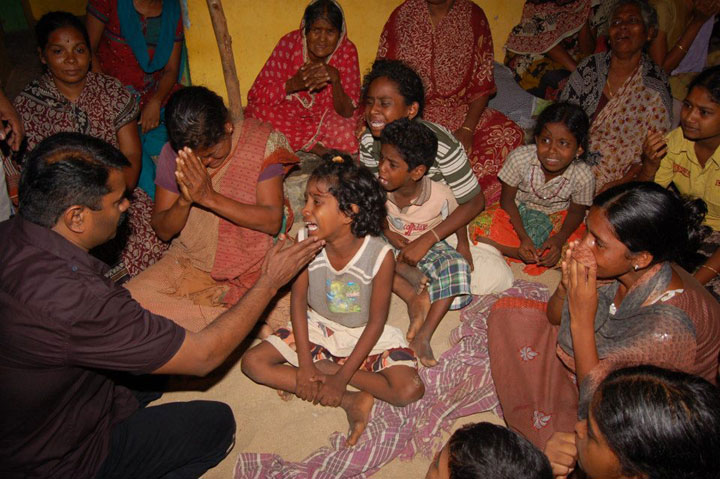Nuclear Martyrs And Necropolitics
By Raminder Kaur
16 September, 2012
Countercurrents.org

The death toll from the state repression of people against the Koodankulam Nuclear Power Plant keeps rising.
The first ever victim was a young man of 19 called Ignatius in May 1989, a year after plans for the plant were first announced in a joint venture between the Indian and then USSR governments. A peaceful rally was dispersed by police firing leaving one family without their teenage son.
The second was last Monday (September 10) in a solidarity protest in the nearby town of Tuticorin where again police firing led to the death of 44 year old Anthony John. There are also unconfirmed reports of a young girl being trampled to death in the ensuing havoc.
And then three days later, the surveillance planes of the Indian Coast Guard, who have been flying only a few meters above the ground over the heads of protesters engaged in Jal Satyagraha (Sea-based Civil Disobedience), led to 38 year old Sahayam falling off the bridge that he was standing on. He was announced dead shortly after being admitted to the nearby Nagercoil hospital.
The Coast Guard deny that they are at fault but any person can see from the numerous photographs of the Idinthikarai coast line how dangerously low they are flying with the intent of aerial intimidation. Even the US aircraft pilots in 1960s Vietnam did not fly so low. How low physically and morally can the Indian forces go?
Land, sea and now air – from all sides the Indian state is imposing lethal machinery of violence against anti-nuclear protesters.

All of the dead have left bereaving families, mothers, fathers, wives, sisters, brothers, children and communities. Sahayam leaves one son and three daughters who cannot understand why government forces are being so harsh on them (seen here being condoled by Seeman, actor, director and the leader of the Tamil political party, Naam Tamilar Kachi).
This rising toll is to add to the death of the 40 year old father, Irfan Qazi, last year when a police officer driving a Sumo rammed into his scooter near to the Jaitapur nuclear power plant in Maharashtra. And elderly farmers who have died due to the stress of a sit-in since 2010 against land acquisition plans for the Gorakhpur nuclear power plant in Haryana – Ishwar Singh Siwach, Bhagu Ram and Ram Kumar.
This amounts to at least 7 deaths in India’s recent nuclear history aside from the occupational and neighborhood hazards of people living next to toxic nuclear industries. In all cases, the authorities have denied culpability. Instead, they have carried on with their unjust practices of lumbering other innocent anti-nuclear people with charges of attempts to murder, including even laying preposterous charges on teenage children.
The philosopher and political scientist, Achille Mbembe, has written about necropolitics where people whose lives are deemed disposable are subjected to death without qualm. In India, we have a case of nuclear authorities protected by the state machinery of violence inflicting death on those marginalised communities such as fishing and farming communities who get in the way of their so-called development plans.
There are three ways that they are doing this. Firstly, the quick fire way of state violence as with shooting at people who protest against their plans. Secondly, death by association due to inflicting punitive strategies of intimidation, harassment and undue stress upon anti-nuclear protesters and their families. And thirdly, a slow and encroaching death that accompanies radionuclide emissions that enter into the food chain and the DNA of all neighboring residents of nuclear plants, a substantial percentage of whom will succumb to death through genetic mutations over the decades.
It is this nuclear necropolitics that people in India are fighting against with a clarion call to a right to a healthy life without repression and crackdowns. The first two modes of death are only convincing them of the need to fight the third source of death.
Today, residents in Kootapulli village protested against the Koodankulam nuclear power plant by burying themselves alive in makeshift graves on the sea shore. Their message is clear. They will fight for the right to life peacefully and imaginatively. They will not succumb to nuclear necropolitics.
The death of the anti-nuclear protesters will not be in vain. Mainstream media may forget as they move on to the next big sensation, but the people will not. Their deaths will be the final nails in the coffins of nuclear power plants.
May they rest in peace.
Raminder Kaur is the author of Atomic Bombay: Living with the Radiance of a Thousand Suns, Performative Politics and the Cultures of Hinduism and co-author with Virinder Kalra and John Hutnyk of Diaspora and Hybridity.
Comments are moderated


